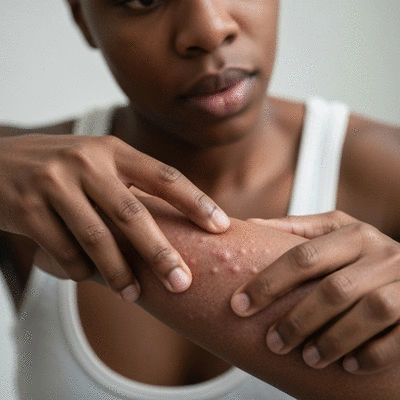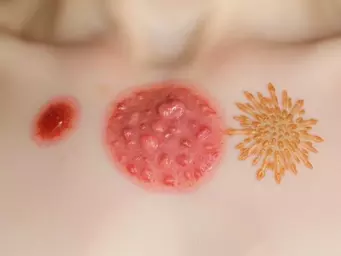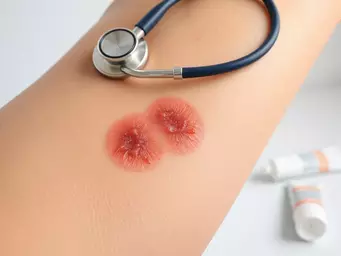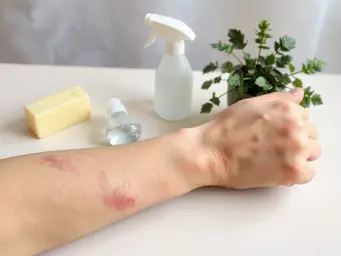Comparing Skin Rashes: Causes & Symptoms
By Clara Vandermeer / Oct 27
Skin rashes might seem like a minor issue, but they can significantly affect your well-being. Recognizing the types and potential impacts of these conditions is vital for effective management. Let’s break down the essential insights you can gain from understanding skin rashes.
This visual outlines the key symptoms and characteristics of three prevalent skin rashes, helping to differentiate between them at a glance.
**Triggered by external contact**
**Linked to allergies & genetics**
**Immune system dysfunction**
Skin rashes can be confusing, can't they? At What Are Rashes, we strive to dismantle the complexities, helping you identify the common types you may encounter. Let's explore three significant rashes: contact dermatitis, eczema, and psoriasis. Understanding their symptoms is the first step to managing your skin health effectively.
Contact dermatitis usually arises from direct contact with an irritant or allergen, leading to red, itchy skin. Eczema, on the other hand, is characterized by dry, inflamed patches that can appear anywhere on the body. Lastly, psoriasis presents as thick, scaly plaques often found on the elbows, knees, and scalp. Recognizing these signs can empower you to take action!
Being able to differentiate between these rashes allows for timely management and relief. If you suspect a rash, it's essential to observe your skin's reactions and seek guidance if symptoms persist!
Did you know that skin rashes can take a toll not only physically but emotionally? The itching and inflammation can disrupt your daily activities and lead to discomfort. For many, it's not just about skin health; it's about feeling good in their own skin.
Social perceptions can add another layer to this issue. People might feel self-conscious or anxious about how their rashes appear to others, leading to isolation or a lack of confidence. At What Are Rashes, we believe that understanding the emotional impact of these conditions is just as crucial as addressing the physical symptoms!
Let’s take a closer look at some common skin conditions:
By exploring these conditions and their respective treatments, we hope to provide a solid foundation for managing your skin health effectively. It’s essential to remember that early recognition leads to better outcomes!
The article discusses three common types: contact dermatitis, eczema (atopic dermatitis), and psoriasis. Each has distinct symptoms and characteristics.
Contact dermatitis presents as red, itchy skin after exposure to an irritant or allergen. Eczema involves dry, inflamed patches that can appear anywhere and is often chronic. Psoriasis features thick, red patches with silvery scales, commonly found on elbows, knees, and scalp.
No, skin rashes can also significantly impact emotional well-being, leading to self-consciousness, anxiety, and social isolation due to their appearance and discomfort.
Early recognition is crucial for timely management and relief, leading to better outcomes and improved quality of life. It allows for prompt intervention and prevents the condition from worsening.
If you notice any changes in your skin, if a rash persists, or if you are unsure about the type of rash, it is highly recommended to consult with a dermatologist for personalized diagnosis and treatment.
Approximately 30% of the population will experience some form of skin rash in their lifetime. Understanding the triggers and symptoms can significantly enhance your skin health management!
Understanding skin rashes and their associated treatments is crucial for maintaining healthy skin. By recognizing the different types of rashes and their symptoms, you can make informed decisions about your skin health. It's essential to choose the right topical treatments that suit your unique skin type and condition.
In my journey with What Are Rashes, I’ve seen firsthand how empowering it can be for individuals to learn about their skin issues. Knowledge is power! By staying informed, you can better manage any skin rash and improve your quality of life.
While general information can be helpful, consulting with healthcare professionals is invaluable. A dermatologist can provide personalized treatment plans tailored to your specific needs. This guidance not only ensures you're using the most effective treatments but also helps you avoid potential pitfalls.
Seeking professional advice can truly make a difference. Remember, you don’t have to navigate skin issues alone—experts are there to help!
I encourage you to assess your symptoms regularly and prioritize proactive self-care. If you notice any changes in your skin or if a rash persists, don’t hesitate to reach out for help. Early intervention is key to effective treatment!
Taking these steps can empower you on your journey to healthier skin. Together, let’s embrace a proactive approach to managing skin rashes!
Here is a quick recap of the important points discussed in the article:



 Comparing Skin Rashes: Causes & Symptoms
In the realm of skin health, recognizing the different types of rashes can be the difference between
Comparing Skin Rashes: Causes & Symptoms
In the realm of skin health, recognizing the different types of rashes can be the difference between
 Identifying and Treating Ringworm
Have you ever wondered how a simple skin rash could create so much confusion? Understanding ringworm
Identifying and Treating Ringworm
Have you ever wondered how a simple skin rash could create so much confusion? Understanding ringworm
 Understanding Contact Dermatitis Causes
Everyday encounters with common products can lead to unexpected skin reactions. By understanding the
Understanding Contact Dermatitis Causes
Everyday encounters with common products can lead to unexpected skin reactions. By understanding the